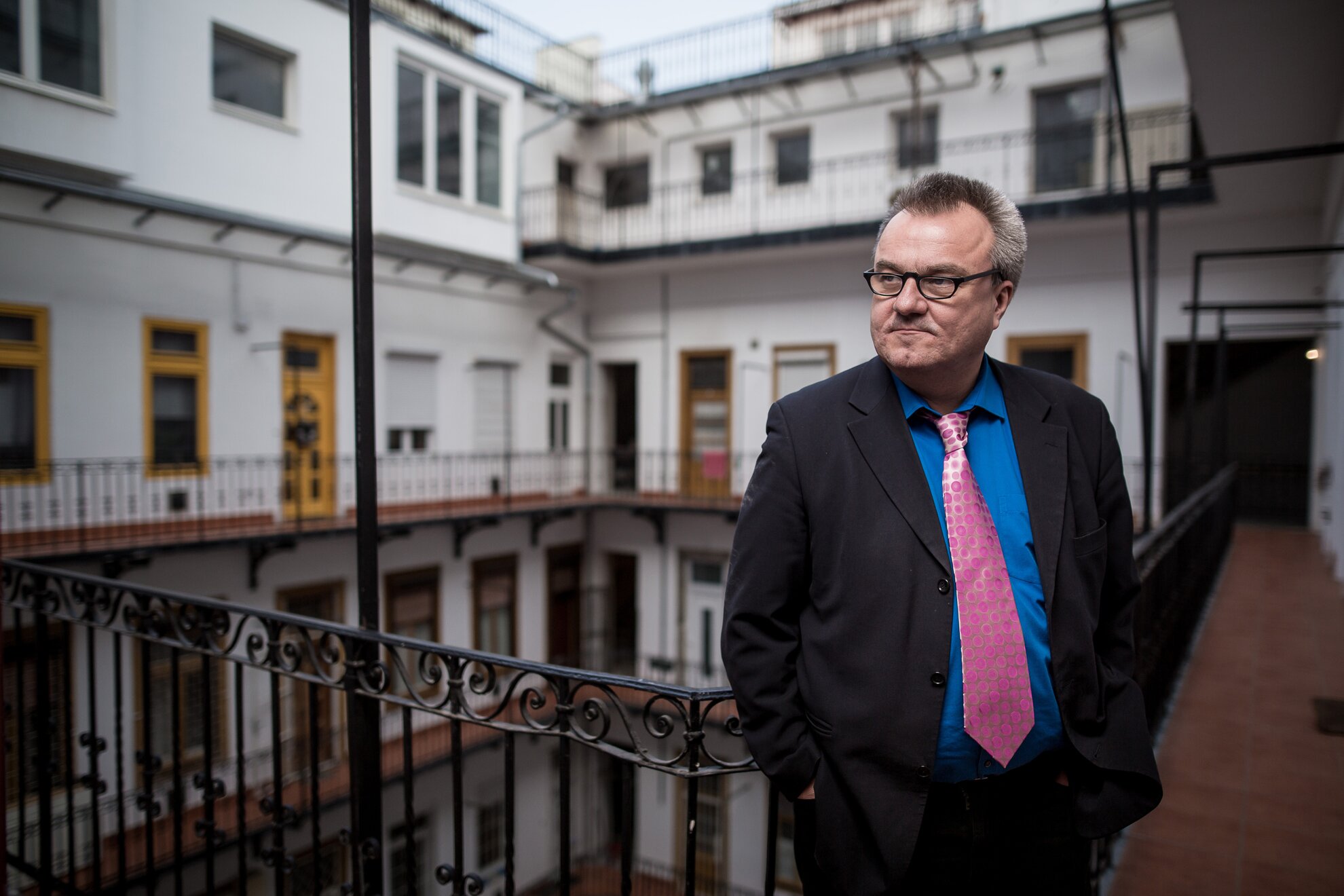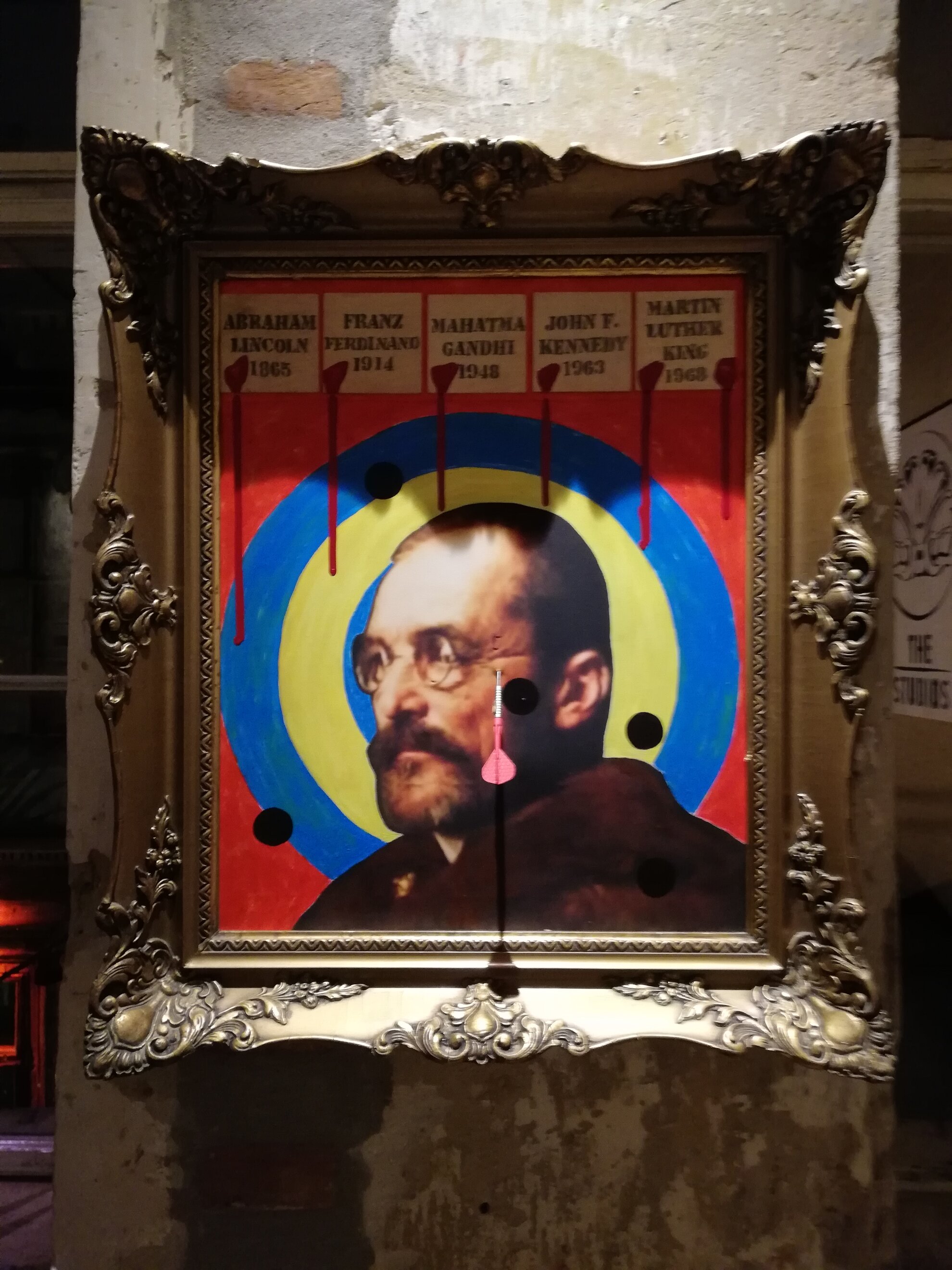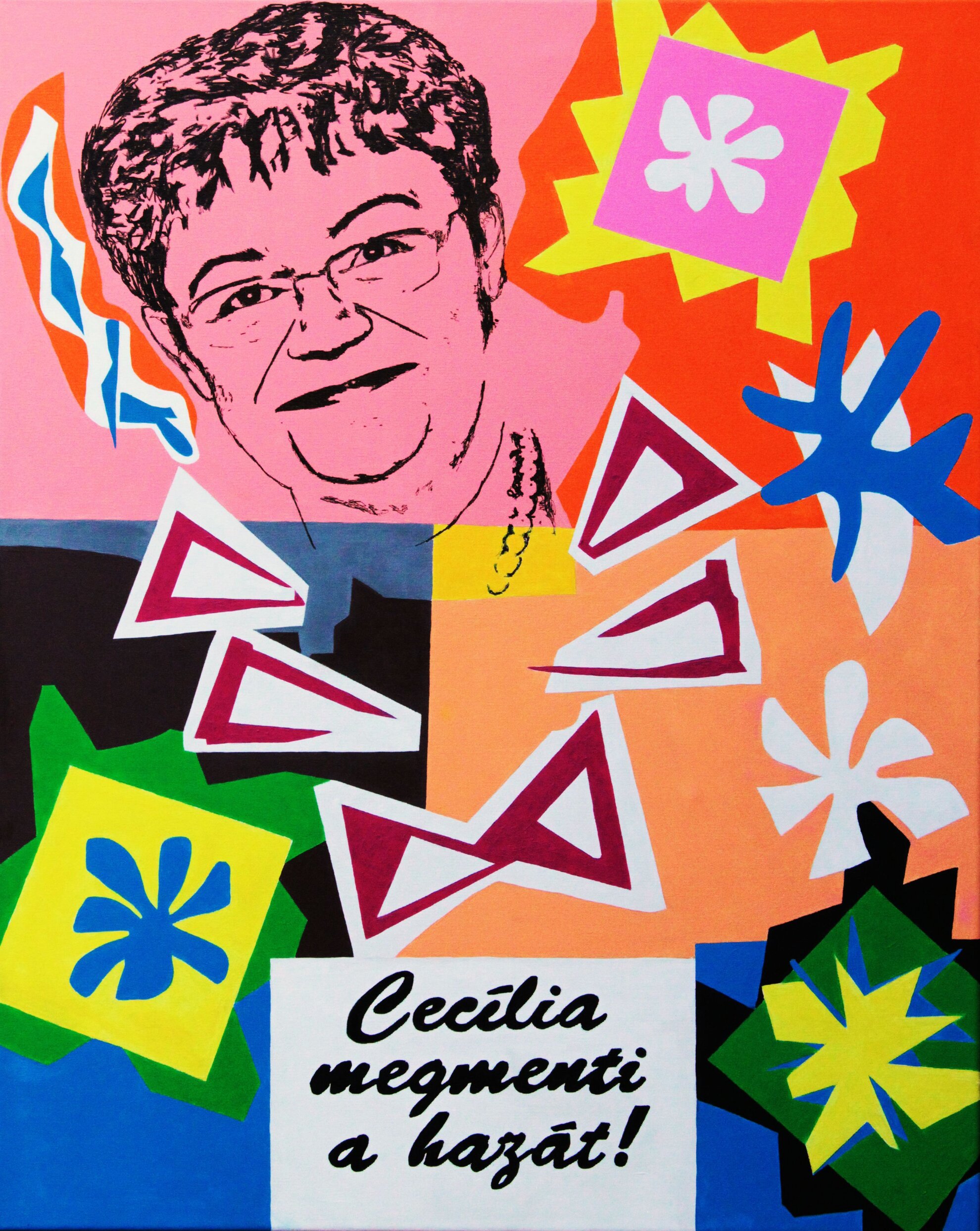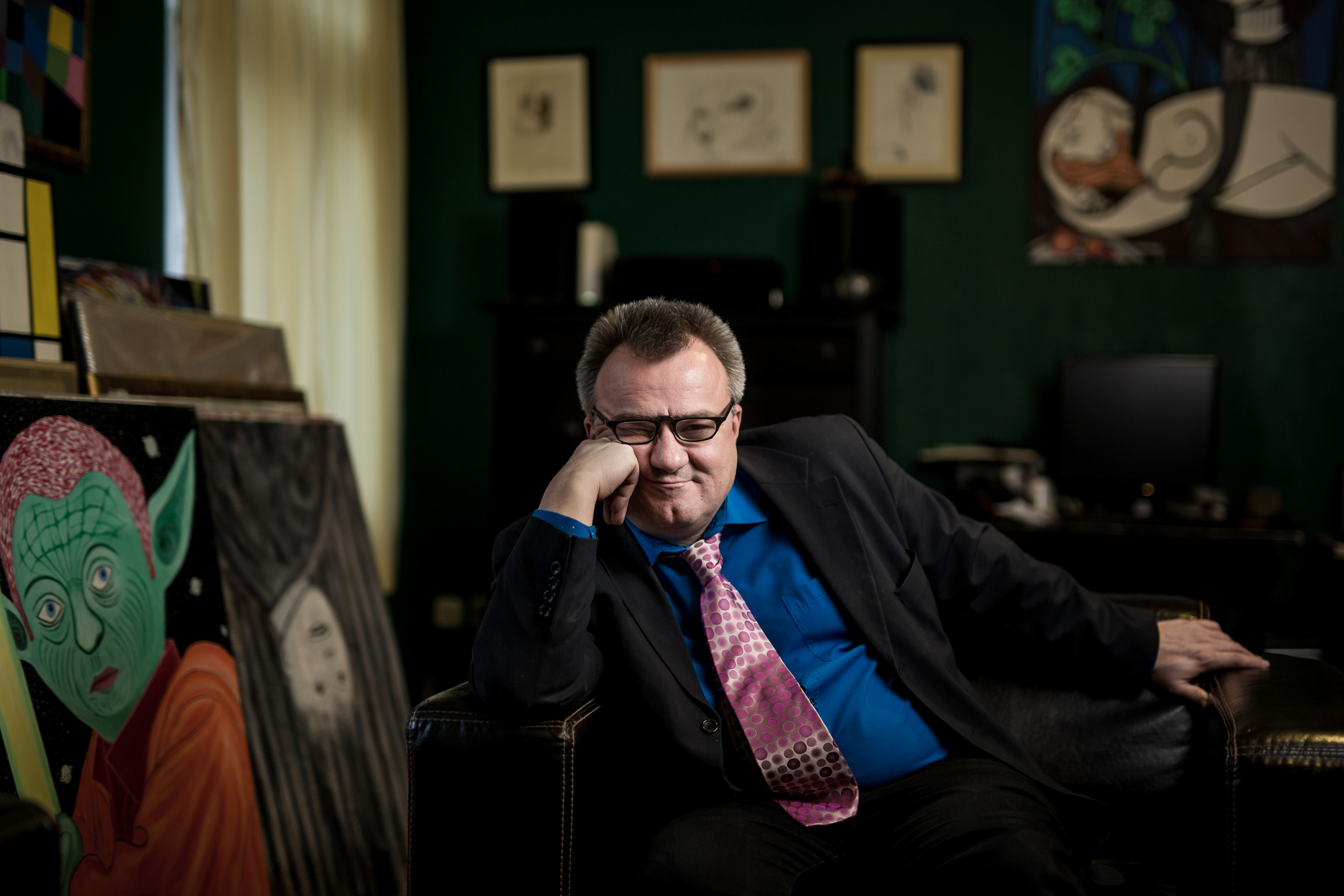Few subjects are too touchy for the brush of drMáriás to tangle with. In fact, the touchier the subject – all-powerful politicians, bitter post-war settlements, historic assassinations – the more this Vojvodina-born artist and underground musician seems to revel in sending it up.

“The current situation makes it difficult to reflect with any clear judgement,” explains Béla. “I’m not looking to make a political fight or take up any kind of provocative stance, just show the diversity of moods, and see how people react to art.”
From Deptford to New York
His brash form of parody has
not been confined to galleries around Hungary, although most of the faces on
his canvases belong to figures with the most influence on the country. Recent
exhibitions have been held in Berlin, St Petersburg, New York, Beijing, Prague
and The Hague.
A decade ago, drMáriás even staged a show at former police
station in Deptford, south-east London, placing former Communist leaders behind
bars.

Now the former graduate of
the Belgrade Faculty of Fine Arts, resident in Budapest since 1991, is creating
an album of 120 paintings. Each will be accompanied by his personal
recollections – “perhaps a story of its inspiration, how it was created or what
happened afterwards” – and reflections by his fellow travellers.
These are the
artists, musicians, scenesters, cultural innovators, the weird and the workshy,
whose shoulders the bear-like Béla has brushed with during three-plus decades
of creative activity. The result should be a unique record of life here after Communism.

Take, for example, István Tisza (After Jasper Johns), in
which the prime minister of Hungary from around the time of World War I is
shown juxtaposed with a target board most associated with the American pop-art
pioneer.
“People tried to assassinate Tisza four times,” says Béla. “The fourth
was successful. Once they shot at him in Parliament, the bullet missed and is still said
to be lodged in the wall of the main debating chamber."
Provocative art
"When I exhibited this painting, it had an actual dart attached to the frame. I wanted to confront the viewer. ‘Would you commit yourself to murder?’ I soon got my answer as someone ripped the dart right off and threw it through the painting in a fit of rage. That kind of commitment doesn’t happen too often at an art gallery.”
Béla is obviously not afraid to use characters from a century ago, yet still he strikes a chord. “My painting of Emperor Franz Joseph relaxing in a bathrobe after a heavy night of partying was bought by someone from Vienna, who took it back to the city to hang in his living room there.”

While some of his figures are
universal – Trump, Stalin, Ceaușescu, Milošević – and
others universally recognised, such as the current Hungarian prime minister, some
are more specific to everyday life in Hungary.
The country’s much-mocked Chief
Medical Officer, Cecília Müller, whose slowly spoken TV addresses are a nightly
feature of the pandemic, has been another recent target for Béla’s brush.
Life during the pandemic
“This is a grotesque time and perhaps my work will help lift this tense mood. We still have to live here together, after all.”
The upcoming retrospective album has a working title of A sok bajra rá se ránts, mert itt jön drMáriás! – a kind of Magyar take on the notorious Sex Pistols LP, with artwork similarly inspired by legendary cover designer, Jamie Reid.

A launch date of 11 May has been earmarked for
the A38, with all the usual suspects invited. The book may also be accompanied
by a compilation CD of songs by Tudósok, Béla’s equally provocative, and equally
hilarious, alternative band. “Perhaps we could issue both as a limited-edition
package,” muses Béla.
You never know – there might even be a free dart with every
album.
More information on the drMáriás webpage.




